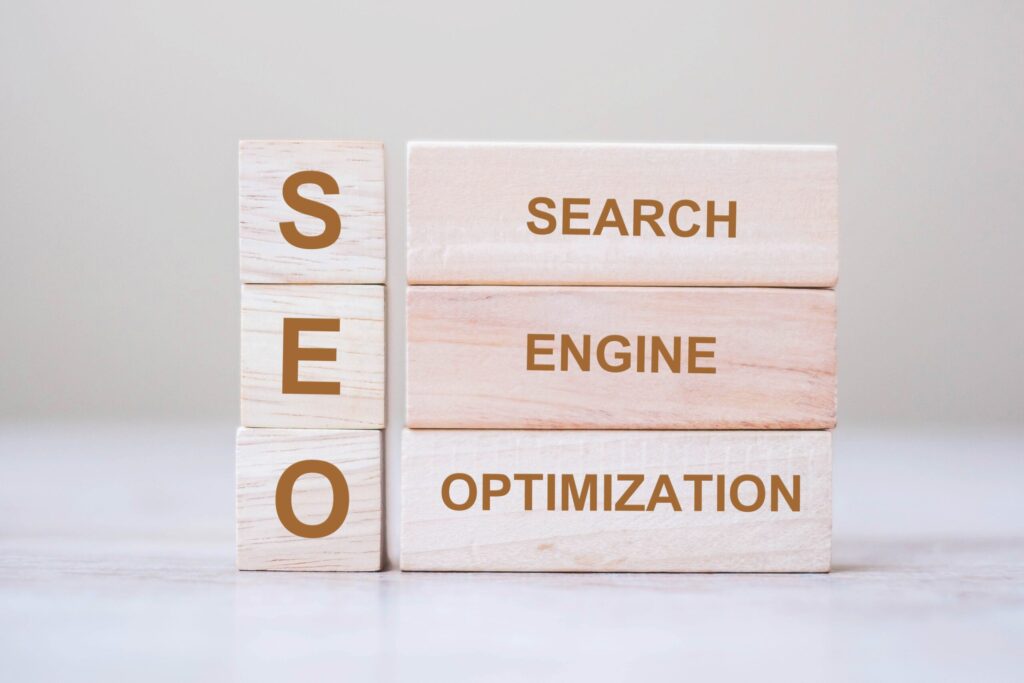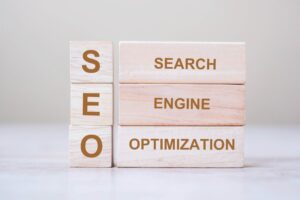Apr. 24, 2023

The 6 Best SEO Practices For Blogs
SEO has gotten more challenging over the years, with competition becoming steeper and search engine algorithms becoming more complex. But if you’re a local business looking to get ranked higher on Google and generate more leads, we’ve got some tips and tricks that can help.
In this post, we’ll be discussing the 6 Best SEO Practices for Blogs that local businesses can use to get ranked higher on Google and generate more leads. These practices include keyword research, on-page optimization, off-page optimization, mobile optimization, and site speed. By implementing these best practices, you can improve your website’s visibility, attract more local customers, and increase your revenue.
Let’s take a closer look at each and learn how you can use them to grow your business.
Keyword Research
What Is Keyword Research
Keyword research is the process of identifying the words and phrases that people use to search for products or services related to your business. It is an important component of SEO because it helps businesses optimize their website’s content to rank higher in search engine results pages (SERPs).
For local businesses, keyword research is especially important since it helps them target specific geographic locations and attract customers in their area. By identifying the keywords that potential customers are using to search for businesses like yours, you can optimize your website to rank higher in local search results and drive more traffic to your website.
Tips for Conducting Effective Keyword Research
- Start with a list of relevant topics: Begin by brainstorming a list of topics that are relevant to your business and that potential customers might search for.
- Use keyword research tools: There are a number of free and paid keyword research tools available, including Google Keyword Planner, SEMrush, and Ahrefs. These tools can help you identify keywords that are relevant to your business and have high search volumes.
- Focus on long-tail keywords: Long-tail keywords are phrases that contain three or more words and are more specific than shorter, more general keywords. They can be highly effective in driving traffic to your website and attracting highly qualified leads. Examples are organic bagel shops near me or buy Korean matcha near me.
- Analyze your competition: Analyzing the keywords that your competitors are using can help you identify gaps in your own keyword strategy and optimize your website to target those keywords.
Tools for Keyword Research
There are a number of tools available for conducting keyword research, ranging from free options like Google Keyword Planner to paid options like SEMrush and Ahrefs. Each tool offers unique features and benefits, and the right one for your business will depend on your specific needs and budget.
On-Page Optimization
What Is On-Page Optimization
On-page optimization refers to the process of optimizing individual web pages to improve their search engine rankings and attract more traffic to your website. It involves optimizing various elements on your website, including title tags, meta descriptions, headers, content, images, and internal linking.
For local businesses, on-page optimization is especially important, as it can help you rank higher in local search results and attract more local customers.
Best Practices for On-Page Optimization
Crafting Title Tags and Meta Descriptions
Title tags and meta descriptions are crucial elements of on-page optimization. They provide a brief summary of your web page’s content and help search engines understand what your page is about.
When crafting title tags and meta descriptions, it’s important to include your target keywords and make them relevant and compelling for users. An effective title tag and meta description can entice potential customers to click on your webpage and increase your click-through rate.
Using Header Tags and Subheadings
Header tags and subheadings are used to organize your web page’s content and help search engines understand the structure of your page. They also make it easier for users to read and navigate your webpage.
When using header tags and subheadings, it’s important to use them in a logical hierarchy and include your target keywords just like this blog article. This can help search engines understand the most important parts of your webpage and improve your rankings.
Creating High-Quality, Engaging Content
Creating high-quality, engaging content is essential for on-page optimization. Your content should be relevant to your target audience and provide value to them. It should also be well-written, informative, and engaging.
When creating content, it’s important to include your target keywords naturally and avoid keyword stuffing. This is where you write in a way that focuses on writing the SEO keyword as many times as possible, rather than informative content that naturally has those words.
Optimizing Images
Optimizing images is an often overlooked aspect of on-page optimization. Images can help make your webpage more engaging and attractive to users, but they can also slow down your webpage’s load time if they are not optimized properly.
When optimizing images, it’s important to compress them to reduce their file size and include relevant alt tags and captions. This can help improve your webpage’s load time and make it more accessible to users with disabilities.
Internal Linking
Internal linking is the process of linking to other pages on your website within your content. This can help search engines understand the structure of your website and improve the user experience by providing additional context and resources.
When internal linking, it’s important to use relevant anchor text and link to pages that are relevant to your content. This can help improve your website’s rankings and keep potential customers engaged with your brand.
Examples of Effective On-Page Optimization for Local Businesses
- A local restaurant includes its location and menu items in its title tags and meta descriptions and uses header tags and subheadings to organize its menu and content.
- A local plumber that creates informative and engaging blog posts about common plumbing problems, includes relevant keywords in their content and uses internal linking to connect their blog posts to relevant service pages on their website.
- A local retail store that optimizes its product images by compressing them and including relevant alt tags, and uses internal linking to cross-promote related products on its website.
By implementing these on-page optimization best practices, local businesses can improve their search engine rankings, attract more local customers, and ultimately increase their revenue.
Off-Page Optimization
What Is Off-Page Optimization
Off-page optimization refers to the actions taken outside of your website to improve its search engine rankings and attract more traffic to your website. It includes tactics such as building backlinks, social media marketing, guest blogging, and influencer outreach.
Tips for Conducting Effective Off-Page Optimization
Building Quality Backlinks
Building quality backlinks is a key component of off-page optimization. Backlinks are links from other websites to yours, and they can help improve your website’s authority and credibility in the eyes of search engines. This can be from blogs, articles, or other credible and high SEO-ranked websites.
When building backlinks, it’s important to focus on quality over quantity and prioritize links from reputable websites in your industry.
Leveraging Social Media for SEO
Social media can be a powerful tool for improving your website’s SEO. By promoting your content on social media, you can attract more traffic to your website and improve its visibility on search engine results pages.
Guest Blogging
Guest blogging is a great way to build backlinks and increase your website’s authority. By writing high-quality, informative blog posts for other websites in your industry, you can attract more traffic to your website and improve your search engine rankings.
It’s important to choose reputable websites to guest blog on and include relevant backlinks to your website in your guest post.
Examples of Effective Off-Page Optimization for Local Businesses
- A local bakery that partners with local food bloggers to guest blog on their website and builds high-quality backlinks to their website.
- A local yoga studio that promotes its classes and events on social media, engages with its followers and uses relevant hashtags to improve its visibility in search engine results pages.
- A local landscaping company that partners with home and garden influencers on Instagram to showcase their work and attract more leads to their website.
Mobile Optimization
What Is Mobile Optimization For SEO?
Mobile optimization refers to the process of optimizing your website for mobile devices such as smartphones and tablets. With more and more people using mobile devices to browse the internet and search for local businesses, mobile optimization is crucial for local businesses to attract and retain mobile customers.
A mobile-optimized website can improve the user experience, increase engagement, and ultimately drive more leads and revenue.
Tips for Optimizing Your Website for Mobile Devices
Responsive Design
Responsive design is an essential component of mobile optimization. A responsive website automatically adjusts its layout and content to fit the screen size of the device it’s being viewed on. This can help ensure that your website looks great and functions properly on any mobile device.
Optimizing Images and Videos for Mobile Devices
Images and videos can be a key part of your website’s content, but they can also slow down your website’s load times on mobile devices. To optimize your images and videos for mobile devices, it’s important to compress them to reduce their file size and choose formats that are compatible with mobile devices.
Keeping Page Load Times Short
Page load times are crucial for mobile optimization. Mobile users are often on the go and have limited patience for slow-loading websites. To keep your page load times short, it’s important to optimize your website’s code and reduce the number of HTTP requests.
Examples of Effective Mobile Optimization for Local Businesses
- A local hair salon that uses responsive design to ensure that its website looks great and functions properly on any mobile device.
- A local restaurant optimizes its menu images for mobile devices and uses a mobile-friendly layout to make it easy for mobile users to view their menus and place orders.
- A local car dealership optimizes its website’s code and reduces the number of HTTP requests to improve its page load times on mobile devices.
By implementing these mobile optimization best practices, local businesses can improve their mobile user experience, attract more mobile customers, and ultimately increase their revenue.
Site Speed
What Is Site Speed For SEO
Site speed refers to the speed at which your website loads and displays its content to visitors. Site speed is a crucial factor for SEO because it affects user experience and engagement. A slow-loading website can frustrate visitors and cause them to leave your website, which can negatively impact your bounce rate and search engine rankings.
Tips for Improving Site Speed
Minimizing File Sizes
Large image and video files can slow down your website’s load times. To minimize file sizes, it’s important to compress your images and videos before uploading them to your website. You can use free online tools to compress your files without sacrificing quality.
Using a Content Delivery Network (CDN)
A content delivery network (CDN) is a network of servers that are distributed around the world. By using a CDN, you can store and deliver your website’s content from multiple server locations, which can help reduce the distance that data has to travel and improve your website’s load times.
Caching Pages
Caching is the process of storing website data temporarily in a user’s browser or on a server to improve load times. By caching pages, you can reduce the amount of time it takes for your website to load for repeat visitors.
Conclusion
In conclusion, implementing the best SEO practices for your blog is essential for local businesses looking to rank higher on Google and attract more leads. By optimizing your website for search engines and user experience, you can improve your online presence, establish brand authority, and increase your chances of success in today’s digital landscape.
At NVISION, we specialize in providing SEO services that can help local businesses achieve their online marketing goals. Our team of experts can help you with every aspect of your SEO strategy, from effective keyword research to optimize your website’s content, building quality backlinks, and improving your site speed.
Contact us today to learn more about our SEO services and how we can help you improve your website’s search engine rankings and grow your business. With our easy and hassle-free process, you can focus on what you do best while we handle your SEO needs.
Book with us
Let’s accomplish what you are looking for, our team of experts are here for you.
Let's work togetherWarning: Working with our team may result in excessive creativity, uncontrollable 'aha' moments, and an addiction to perfect pixels. Please proceed with caution.



